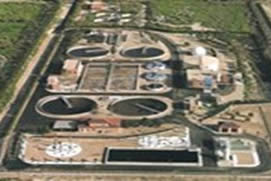The wastewater treatment process produces sludge and other biosolids which can be used to generate combustible biogas.
Acciona Agua creates innovative projects that have made the company a leader in the sector. A recently released study by the firm is called ‘Co-digestion of sewage sludge from a wastewater treatment facility as a tool to improve electricity generation capacity’. This program was started at the wastewater treatment facility located in Alcantarilla (in the eastern Spanish region of Murcia) with laboratory tests whose results greatly exceeded expectations. The tests showed that energy production capacity increased with the use of biogas from pilot digestion facilities.
Sewage sludge is a byproduct of the wastewater treatment process. Using anaerobic digestion sludge and biosolids can create biogas, which is rich in methane and has high energy value. This gas can be used to power motors for electricity generation. The most important result of this project is that its results are so encouraging it will now be upgraded to an industrial scale.
After the testing was completed, the experiments were repeated and they confirmed the first set of excellent results. This suggests that a treatment facility could be self-sufficient from an energy consumption standpoint. Until now it was unthinkable that a treatment plant of the dimensions being studied could become energy self-sufficient, and not have to consume any electricity from the grid. With this new project some treatment plants could produce up to 70% of the energy that they require to operate.
